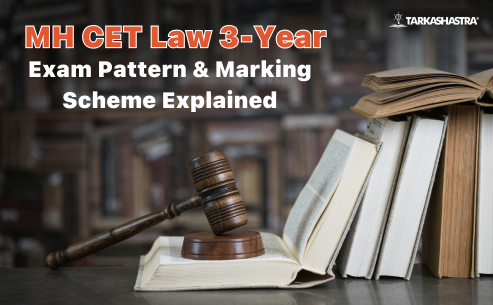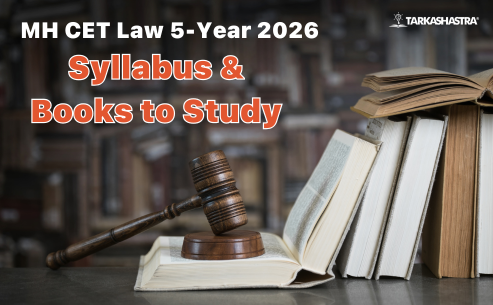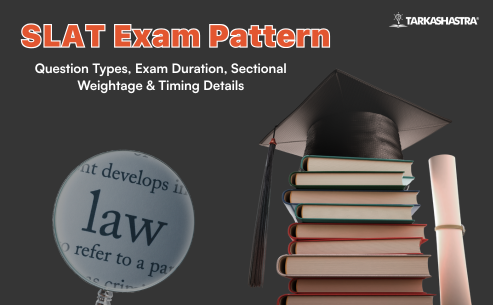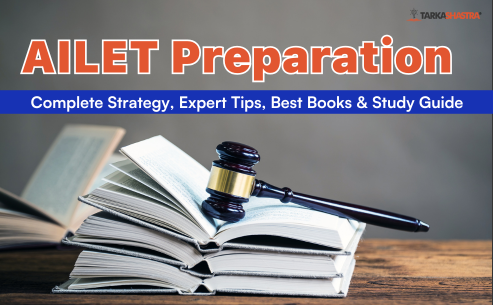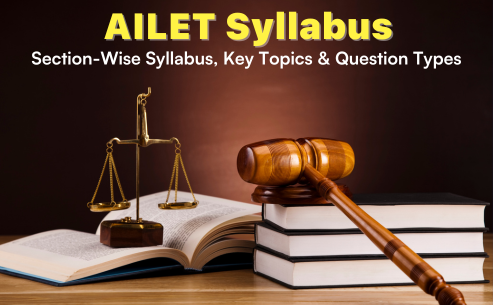The MH CET Law 3 Year Exam 2026 is one of Maharashtra’s most sought-after entrance exams for graduates aspiring to pursue law. Conducted by the State Common Entrance Test Cell (CET Cell), Maharashtra, this exam opens the gateway to 3-Year LL.B programs offered by over 140 top government, aided, and private law colleges across the state.
Whether you aim for prestigious institutions like Government Law College (G L C Mumbai), ILS Law College Pune, or Dr. Ambedkar College of Law Mumbai, understanding the exam pattern and marking scheme is the first step toward an innovative preparation strategy.
Each year, thousands of graduates appear for this competitive test — yet only those who plan their approach as per the official pattern and marking rules manage to secure top ranks and seats in reputed colleges.
Why Understanding the MH CET LAW 3 Year Exam Pattern Matters?
- It helps you allocate time and effort section-wise based on the marks’ weightage.
- You can simulate mock tests realistically, mirroring the official structure.
- It ensures no surprises on exam day – from mode to duration to question style.
- It lets you craft a target-based preparation plan focused on accuracy and speed.
What’s New for 2026?
- No significant structural changes expected — pattern remains similar to 2025.
- CET Cell is likely to retain 120 questions for a 120-mark format.
- Online exam with bilingual (English + Marathi) interface continues.
- Percentile-based scoring will determine merit and CAP round admissions.
In short:
Before diving into preparation, aspirants must master the MH CET Law 3-Year Exam Pattern 2026 — knowing how many questions to expect, their distribution, and how each mark contributes to their overall percentile. This foundation will guide every mock, revision, and time-management decision ahead.
Overview of MH CET Law 3-Year 2026 Exam Pattern
To excel in any entrance exam, the first step is to decode its structure — and the MH CET Law 3-Year (LL.B) 2026 exam is no different. The State CET Cell, Maharashtra, has designed a simple yet strategic paper pattern to test a candidate’s legal aptitude, reasoning, general awareness, and English language proficiency — all essential qualities for future law professionals.
The exam follows an objective-type, multiple-choice format, conducted online (Computer-Based Test) across designated centers in Maharashtra and select cities outside the state.
Key Highlights of MH CET Law 3-Year Exam Pattern 2026
| Feature | Details |
| Mode of Exam | Online (Computer-Based Test) |
| Type of Questions | Multiple-Choice Questions (MCQs) |
| Total Questions | 120 |
| Total Marks | 120 |
| Marks per Question | 1 Mark |
| Negative Marking | No Negative Marking |
| Duration | 120 Minutes (2 Hours) |
| Sections | 4 Sections Legal aptitude and legal reasoningGeneral Knowledge & Current AffairsLogical & Analytical ReasoningEnglish |
| Exam Medium | English & Marathi |
| Exam Level | State-Level (for Maharashtra Law Colleges) |
| Exam Conducting Body | State CET Cell, Maharashtra |
Section-Wise Distribution of Questions
The MH CET Law 3-Year exam paper is divided into four main sections, each carrying different question counts but equal scoring weightage overall. Below is the complete section-wise breakdown:
| Section | No. of Questions | Marks | Weightage | Difficulty Level | Suggested Time (Approx.) |
| Legal Aptitude & Legal Reasoning | 24 | 24 | 20% | Moderate | 25 minutes |
| General Knowledge & Current Affairs | 32 | 32 | 27% | Moderate to Dynamic | 15 minutes |
| Logical & Analytical Reasoning | 24 | 24 | 20% | Moderate | 40 minutes |
| English Language | 40 | 40 | 33% | Easy to Moderate | 30 minutes |
| Revisit Marked Questions | – | – | – | – | 10 minutes |
| Total | 120 | 120 | 100% | — | 120 Minutes |
Important Takeaways
- The exam follows a no-negative-marking policy — attempt all 120 questions for maximum score advantage.
- There is no sectional timing, so candidates can freely switch between sections.
- Every correct response fetches 1 mark, while unanswered or incorrect questions neither gain nor lose marks.
- The paper is designed to assess both legal aptitude and general awareness, making conceptual clarity essential.
- Around 32 marks in GK + 40 marks in English generally form the score-deciding sections for toppers.
How the Pattern Influences Preparation?
- Focus on speed and accuracy, since each section contributes equally to the total score.
- Since there’s no negative marking, students should develop a habit of intelligent guessing for unfamiliar questions.
- English and GK sections form the core scoring area, while Legal and reasoning can help secure easy marks quickly.
Section-Wise Detailed Breakdown (2026)
The 2026 paper comprises 4 sections with the following distribution: Legal Aptitude & Legal Reasoning (24), GK & Current Affairs (32), Logical & Analytical Reasoning (24), English (40). This section-wise split is the current, corrected structure for 2026.
- Legal Aptitude & Legal Reasoning (24 Qs | 24 Marks)
What this section checks
Ability to apply legal principles to fact situations, infer outcomes, and spot logical consistency in arguments.
Core topics & weight pointers
| Topic Cluster | Focus Areas | Why it matters |
| Legal Principles & Facts | Principle–fact application, assumption vs conclusion | Forms the backbone of the section |
| Basic Substantive Law | Contract, Torts, IPC basics, Constitutional fundamentals | Repeatedly seen as “context” for principles |
| Legal GK & Maxims | Important maxims, recent legal developments | Adds 2–4 quick wins |
Question style you’ll face
- Principle–Fact MCQs (most frequent)
- Identify the most legally sound option
- Strengthen/Weaken legal arguments
Ideal attempt strategy
- Time target: ~25 minutes (do not over-solve tricky principle questions)
- Read the principle first, then scan options to pre-empt traps.
- If two choices look similar, re-check the scope of the principle (no extra assumptions).
High-yield mini-plan
- Build a principal index (own notes of frequently tested legal rules).
- Weekly 10–15 principle-fact drills; monthly 2 sectional mocks.
- General Knowledge & Current Affairs (32 Qs | 32 Marks)
What this section checks
Breadth of awareness across national/international current events, polity, economy, science-tech, and legal current affairs.
Priority coverage map
| Area | Sub-topics | Coverage Hint |
| Current Affairs (last 9–12 months) | Bills/Acts, SC/HC judgments, committees, international bodies, sports, awards | Largest share; update weekly |
| Static GK | Polity, Geography, History (Modern), Economy basics | Revise via compact notes |
| Legal CA | New criminal laws, amendments, law commission items | Often 4–6 quick questions |
Sources & cadence
- Daily: One quality newspaper + 10-minute legal news recap
- Weekly: Capsule revision + 100-question GK quiz
- Monthly: Grand CA revision set (law-heavy)
Time & scoring outlook
- Time target: ~30 minutes; questions are factual and speed-friendly.
- Historically a decider along with English; target 24+ here for a cushion.
- Logical & Analytical Reasoning (24 Qs | 24 Marks)
What this section checks
Pattern recognition, deduction, and argument analysis—accuracy under time.
Blueprint of question types
| Type | Examples | Tip |
| Analytical Puzzles | Linear/Matrix arrangements, grouping | Draw neat tables fast |
| Verbal Logic | Syllogisms, statement–assumption/conclusion | Standardize Venn/logic templates |
| Series & Coding | Number/alphabet series, coding-decoding | Look for “distance” patterns |
| Relations & Directions | Blood relations, directions | Sketch; don’t solve in your head |
Execution plan
- Time target: ~30 minutes.
- Do non-puzzle quickies first (syllogisms, series) → then short puzzles → leave 1 long set for the end if time permits.
- Maintain 90–95% accuracy; guessing is fine later due to the scoring model (no negatives).
- English Language (40 Qs | 40 Marks)
This is the most significant section and a proven score-booster with smart prep.
Likely composition
| Component | What to expect | How to crack |
| Reading Comprehension | 2–3 short RCs (law/civics/general themes) | Read the question first; scan passage purposefully |
| Vocabulary | Synonyms/antonyms, usage, idioms | Build a 500-word high-yield list |
| Grammar & Usage | Error spotting, sentence improvement | Master 10 rules (tenses, SVA, modifiers, parallelism, prepositions) |
| Para-based | Jumbles, odd-one-out | Use linking words & pronoun anchors |
Time & target
- Time target: ~20 minutes.
- Aim 30+ / 40 through RC + vocab + error-spotting efficiency.
Common Pitfalls (and fixes)
- Over-solving legal sets: Cap per-question time; if stuck, park & proceed.
- GK cramming in the last month: Switch to weekly capsule discipline from day one.
- Unstructured LR practice: Drill question-type buckets (not random sets).
- Reading every RC in full: Question-first scanning → read only relevant segments.
- Leaving questions unattempted: Use POE + guess in last 5–7 minutes (no negatives).
MH CET Law 3-Year 2026 Marking Scheme Explained.
The MH CET Law 3-Year (LL.B) 2026 follows a transparent and straightforward marking system — designed to reward accuracy and encourage full attempts. Since there is no negative marking, students can maximise their score potential by attempting all 120 questions confidently.
Key Highlights of the Marking Scheme
| Parameter | Details (2026) |
| Total Questions | 120 |
| Total Marks | 120 |
| Marks per Question | +1 mark |
| Negative Marking | None |
| Unattempted Questions | 0 marks (no penalty) |
| Total Duration | 120 minutes |
| Sections | 4 (English, GK & Current Affairs, Legal Aptitude, Logical Reasoning) |
| Scoring System | 1 mark per correct answer |
| Result Basis | Percentile score calculated out of 120 marks |
How Are Marks Calculated?
The raw score obtained (out of 120) is converted into a percentile score, which determines your merit rank during the Centralized Admission Process (CAP).
Example Calculation:
| Candidate | Correct Answers | Incorrect Answers | Total Marks | Percentile (Approx.) |
| Candidate A | 108 | 12 | 108 | 99.5+ |
| Candidate B | 92 | 28 | 92 | 97+ |
| Candidate C | 76 | 44 | 76 | 90+ |
| Candidate D | 60 | 60 | 60 | 80+ |
Formula Used by CET Cell:
Percentile Score = (120 – Rank of Candidate) ÷ Total Candidates × 100
This ensures that even if the exam difficulty varies slightly each year, percentile normalization maintains fairness.
What the Marking System Implies for You
- Attempt all questions
- Since there’s no penalty, there’s zero risk in marking every question.
- Even educated guessing can improve the final percentile by 2–3 points.
- Focus on accuracy + speed
- Time-per-question ≈ 60 seconds.
- Avoid second-guessing correct answers—stick to your first instinct if logical.
- Sectional balance matters
- Equal marks are distributed across all sections (English being slightly higher in count).
- Overperforming in one area can compensate for minor errors elsewhere.
- No sectional cut-off
- Only aggregate score matters, but a balanced performance helps in tiebreakers.
Ideal Attempt Strategy (Based on Topper Trends)
| Section | Total Qs | Ideal Attempts | Expected Accuracy | Expected Marks |
| English | 40 | 38–40 | 85–90% | 33–36 |
| GK & Current Affairs | 32 | 30–32 | 75–80% | 24–26 |
| Legal Aptitude | 24 | 22–24 | 80–85% | 18–20 |
| Logical Reasoning | 24 | 22–24 | 85–90% | 19–21 |
| Total | 120 | 110–115 | 80–85% overall | 90+ marks (99+ percentile) |
Why the “No Negative Marking” Policy Is a Game-Changer?
| Aspect | Impact |
| Encourages complete attempt | Students can attempt all 120 questions without fear of losing marks. |
| Promotes risk-taking | Increases possibility of scoring through intelligent guessing. |
| Benefits time-efficient students | Those who manage time well can make more educated attempts. |
| Reduces exam stress | No penalty for mistakes = higher confidence. |
Tarkashastra Tip: Smart Guessing Strategy
If you are unsure about a question:
- Eliminate 1–2 clearly wrong options first.
- Choose between the remaining using logic, grammar, or legal reasoning cues.
- Mark your best guess instead of leaving it blank — you lose nothing.
Remember: Each question left unattempted is a potential mark lost in a percentile-based competition.
Strategy to Prepare According to Exam Pattern & Marking Scheme (2026)
With the MH CET Law 3-Year 2026 exam pattern clearly defined — 120 questions across English (40), GK & Current Affairs (32), Legal Aptitude (24), and Logical Reasoning (24) — aspirants must now focus on building a section-wise preparation strategy that balances accuracy, speed, and awareness.
This section offers a complete roadmap — from daily study structure to long-term planning — designed specifically for 2026 aspirants.
Step 1 – Understand Weightage vs Effort
| Section | Questions | Weightage (%) | Difficulty (2025 Trend) | Priority Level |
| English | 40 | 33% | Easy to Moderate | ⭐⭐⭐⭐ |
| GK & Current Affairs | 32 | 27% | Moderate | ⭐⭐⭐⭐ |
| Legal Aptitude | 24 | 20% | Moderate to Slightly Tough | ⭐⭐⭐⭐ |
| Logical Reasoning | 24 | 20% | Moderate | ⭐⭐⭐ |
| Total | 120 | 100% | — | — |
Takeaway: English and GK together contribute 60–65% of total marks, but legal aptitude is what differentiates top percentile scorers. Focus evenly.
Step 2 – Build a 3-Phase Preparation Plan
| Phase | Duration | Goals | Action Points |
| Foundation (Nov 2025 – Jan 2026) | 3 months | Understand all topics; strengthen basics | – Read daily newspaper (The Hindu / Indian Express)- Build vocabulary & grammar- Start learning basic legal concepts (Constitution, IPC, Contract)- Practice 10 reasoning sets weekly |
| Practice & Strengthening (Feb – Mar 2026) | 2 months | Apply concepts & increase speed | – Attempt 1 sectional mock per week- Revise monthly current affairs- Time your RCs & reasoning drills- Learn 10 new legal maxims per week |
| Revision & Mock Phase (Apr 2026) | 1 month | Maximize accuracy & adapt to exam mode | – 10–12 full-length mocks- Analyze mistakes after each test- Practice mixed-section sets- Revise static GK + legal principles |
Step 3 – Section-Wise Preparation Strategy
A. English (40 Marks)
- Focus Areas: RCs, grammar, vocabulary, para-jumbles, error detection
- Daily Routine:
- Read one editorial daily → summarize in 5 lines
- Practice 10 grammar questions + 10 vocab drills
- Tarkashastra Tip: Keep a “word diary” — note 5 new words daily and revise weekly.
Target Score: 32–35 marks
B. GK & Current Affairs (32 Marks)
- Focus Areas: Legal news, national events, government schemes, awards, current bills
- Weekly Routine:
- 3 days: Current affairs (past 9–12 months)
- 2 days: Static GK (Polity, Economy, History)
- 1 day: Legal GK & judiciary updates
- Tarkashastra Tip: Use monthly CA magazines or Tarkashastra’s Legal GK Capsules.
Target Score: 24–26 marks
C. Legal Aptitude (24 Marks)
- Focus Areas: Legal principles, facts, legal maxims, logical conclusions
- Weekly Routine:
- 4–5 legal reasoning sets (principle-based)
- 5 maxims + 5 constitutional articles
- 1 mini test every Sunday
- Tarkashastra Tip: Don’t memorize laws — practice applying principles logically.
Target Score: 18–20 marks
D. Logical & Analytical Reasoning (24 Marks)
- Focus Areas: Series, coding-decoding, blood relations, syllogisms, arrangements
- Daily Routine:
- 1 logical reasoning topic per day
- 2 sectional tests per week under timed conditions
- Tarkashastra Tip: Start each reasoning session with 2 easy sets to build flow.
Target Score: 18–20 marks
Step 4 – Smart Time Management Strategy (Exam-Day Approach)
| Section Order | Time (Minutes) | Strategy |
| English | 20 | Start with easy-scoring section to boost confidence |
| GK & Current Affairs | 25–30 | Attempt direct factual questions quickly |
| Legal Aptitude | 25 | Read principle carefully; don’t overthink |
| Logical Reasoning | 25 | Prioritize short reasoning sets |
| Review & Guess Marking | 10–15 | Use last 10 mins to attempt remaining questions |
Total = 120 minutes. Aim to attempt 110–115 questions confidently.
Step 5 – Mock Test Strategy
| Mock Stage | Frequency | Focus Area | Expected Outcome |
| Basic Stage (Dec–Jan) | 1 per 2 weeks | Get used to computer-based pattern | Build familiarity |
| Intensive Stage (Feb-Mar) | 1 per week | Identify weak areas & manage time | Improve consistency |
| Final Stage (Apr) | 2–3 per week | Full test simulation + revision | Boost speed & accuracy |
Analyze after every mock:
Identify section-wise errors, slow areas, and accuracy % (target ≥ 85%).
Step 6 – Leverage the No-Negative-Marking Advantage
- Attempt all 120 questions — no penalty for wrong answers.
- Use intelligent guessing if 2 options can be eliminated.
- Don’t waste time revisiting doubtful questions multiple times.
- Remember: Even 3–4 extra guessed correct answers can boost your percentile significantly.
Step 7 – The “90+ Marks Plan”
| Phase | Milestone Target | Expected Marks | Percentile Band |
| Foundation | Basic familiarity | 50–60 | 70–80% |
| Practice | Sectional command | 70–80 | 85–90% |
| Mocks | Consistency | 85–90 | 95–98% |
| Final Phase | Peak performance | 90–100 | 99+% |
Tarkashastra Mentor Insight
“The MH CET Law 3-Year exam isn’t about mugging up 1,000 facts — it’s about smart time management, disciplined mock analysis, and consistent reading habits. If you can sustain your rhythm for six months, you’ll find yourself among the top percentile.”
Final Advice for 2026 Aspirants
- Begin preparation by November 2025 — not after notifications.
- Maintain a daily reading + reasoning + recall routine.
- Don’t chase perfection in one section; focus on overall accuracy.
- Use Tarkashastra’s mock portal and mentor feedback for real-time improvement.
Common Mistakes to Avoid in MH CET Law 3-Year Exam (2026)
Even the best-prepared candidates often lose crucial marks in MH CET Law because of small yet repeated mistakes — poor time division, panic-driven attempts, or misreading questions. Avoiding these pitfalls can single-handedly improve your percentile by 5–10 points.
Here are the most common mistakes aspirants made in the 2025 exam and how you can avoid them in 2026:
1. Ignoring GK and Current Affairs Until the Last Month
- What happens: Students focus on English or reasoning and postpone GK prep, only to realise too late that 25–30% of the paper comes from GK.
- Avoid by:
- Reading one newspaper (The Hindu / Indian Express) daily.
- Using monthly legal + current affairs capsules.
- Revising monthly through quizzes or Tarkashastra’s Law GK Compendium.
Tip: GK is memory-based — small, consistent efforts win over last-minute cramming.
2. Not Practising Legal Reasoning Under Time Pressure
- What happens: Aspirants read every word of long legal questions and overthink the principle-fact sets.
- Avoid by:
- Setting a time cap of 1 minute per legal question.
- Skipping confusing ones and returning later.
- Practising at least 10 timed legal sets weekly.
Tip: The key is not to “know all laws” but to apply logic under exam stress.
3. Neglecting English, Thinking It’s “Easy”
- What happens: Students assume English is basic, but lose marks in RCs, para-jumbles, and error detection.
- Avoid by:
- Practising grammar and comprehension daily.
- I read one editorial each morning.
- Maintaining a personal vocab notebook.
Tip: English is the highest-weight section (40 marks) — your most reliable score booster.
4. Over-Spending Time on Logical Puzzles
- What happens: Time drains away on a single lengthy reasoning puzzle.
- Avoid by:
- Attempting short questions first — syllogisms, series, coding.
- Returning to long puzzles only if time permits.
- Maintaining strict time control (max 30 mins total).
Tip: Reasoning accuracy > solving every set. Play strategically.
5. Not Attempting All Questions Despite No Negative Marking
- What happens: Students skip uncertain questions even when there’s no penalty for wrong answers.
- Avoid by:
- Attempting all 120 questions.
- Using elimination + intelligent guessing.
- Reserving the last 10 minutes for reviewing skipped ones.
Tip: In a percentile-based test, even 3–4 extra correct guesses can shift your rank by hundreds of spots.
6. Not Analysing Mock Tests Properly
- What happens: Students give multiple mocks but don’t analyse mistakes, so errors repeat.
- Avoid by:
- Maintaining a mock analysis sheet tracking section-wise accuracy.
- Reviewing every incorrect question — why you missed it, not just what’s right.
- Tracking speed per section weekly.
Tip: Improvement lies not in taking more mocks, but in extracting lessons from each one.
7. Panicking When Paper Seems Different
- What happens: Even minor variations in GK or legal questions trigger panic, leading to misreading and silly errors.
- Avoid by:
- Practising across diverse question sets.
- Staying calm and focusing on accuracy.
- Remember: Every student gets the same paper. How you adapt defines your percentile.
Tip: Practice stress management — mock pressure = real exam advantage.
8. Ignoring Official Notifications and Updates
- What happens: Students depend only on coaching updates and miss CET Cell announcements (like form deadlines or revised pattern PDFs).
- Avoid by:
- Regularly check https://cetcell.mahacet.org.
- Joining a verified Telegram or mentor update group (Tarkashastra provides this).
Tip: Stay informed — every year, hundreds miss CAP rounds due to missed notifications.
9. Depending Solely on PDFs Instead of Active Reading
- What happens: Passive reading of notes leads to poor recall under time pressure.
- Avoid by:
- Engaging in active revision — quizzes, mock tests, and short summaries.
- Teaching a topic to a peer to retain better.
Tip: Active recall > passive review. Always test yourself after reading.
10. Ignoring Post-Exam CAP Process Preparation
- What happens: Students celebrate after the exam, but delay document collection and CAP registration, risking seat allocation.
- Avoid by:
- Keeping all academic and identity documents ready by the result week.
- Understanding the CAP counselling steps in advance.
Tip: Your CET score only matters if your CAP form is submitted correctly and on time.
Mentor Message
“A topper isn’t someone who answers every question correctly — it’s someone who avoids unnecessary errors. If you manage your time, attempt all questions, and stay calm, the MH CET Law 3-Year 2026 will reward your preparation handsomely.”
Conclusion – Decode the Pattern, Plan Smart & Conquer MH CET Law 3-Year 2026
The MH CET Law 3-Year 2026 exam is not just about what you study — it’s about how strategically you prepare.
With 120 questions, no negative marking, and four balanced sections testing reading, reasoning, legal aptitude, and awareness, success in this exam depends on clarity, consistency, and composure.
By now, you know:
- The exact section-wise pattern and weightage
- The marking scheme and percentile logic
- And the common mistakes to avoid
But what separates toppers from the rest isn’t just hard work — it’s guided preparation.
Having the right mentors, mock tests that mirror CET trends, and structured study plans designed by experts makes all the difference.
Tarkashastra’s Edge for MH CET Law 3-Year 2026 Aspirants
At Tarkashastra, our programs are built by law entrance toppers and mentors who’ve walked the same path and cracked CET with 99+ percentiles.
We help aspirants:
- Learn with section-wise strategy sessions
- Practice through mock tests designed by top law alumni
- Build reading, reasoning, and revision consistency
- Stay updated with legal & current affairs capsules
- Get personalised mentor feedback after each mock
Our goal is simple — help you reach your dream college, whether it’s GLC Mumbai, ILS Pune, or Ambedkar Law College.
Ready to Begin Your Journey?
- Join Tarkashastra’s MH CET Law 3-Year 2026 Program
- Get expert guidance, alumni-designed mocks, and a personalised preparation roadmap.
- Start today — and make your law school dream a reality.
Visit: www.tarkashastra.co.in
Call: +91 72 6400 6300
Plan smart, stay consistent, and prepare with mentors who know what it takes. Your law school journey begins here — with Tarkashastra.
FAQs on MH CET Law 3-Year Exam Pattern & Marking Scheme (2026)
Below are the most searched and relevant questions aspirants ask about the MH CET Law 3-Year 2026 exam pattern, marking scheme, syllabus, and preparation strategy.
1. What is the exam pattern for MH CET Law 3-Year 2026?
The exam consists of 120 multiple-choice questions divided into four sections — English (40), GK & Current Affairs (32), Legal Aptitude (24), and Logical Reasoning (24). Each question carries 1 mark, and there is no negative marking.
2. How many marks is the MH CET Law 3-Year 2026 exam worth?
The total marks are 120, with each question carrying one mark. Candidates are awarded +1 mark for every correct answer and 0 marks for incorrect or unattempted answers.
3. Is there negative marking in MH CET Law 3-Year 2026?
No. The exam follows a no-negative-marking policy, meaning candidates should attempt all 120 questions to maximise their score.
4. What is the total duration of the MH CET Law 3-Year 2026 exam?
The total exam duration is 120 minutes (2 hours). The paper is conducted online in a single session through the Computer-Based Test (CBT) mode.
5. What are the sections included in the MH CET Law 3-Year syllabus 2026?
The four main sections are:
- English Language
- General Knowledge & Current Affairs
- Legal Aptitude & Legal Reasoning
- Logical & Analytical Reasoning
6. What is the marking scheme of MH CET Law 3-Year 2026?
- Each correct answer = +1 mark
- Incorrect / Unattempted = 0 marks
- Total = 120 marks
- No sectional cut-off or negative marking.
7. What language will the MH CET Law 3-Year 2026 exam be conducted in?
The exam will be available in English and Marathi, as per the State CET Cell’s guidelines.
8. How many questions should I attempt to score 90+ marks in MH CET Law 3-Year 2026?
You should aim to attempt at least 110–115 questions with 80–85% accuracy, which generally corresponds to a 90+ raw score and 99+ percentile.
9. Are there any changes expected in the MH CET Law 3-Year 2026 exam pattern?
As per recent updates, no significant structural changes are expected for 2026. The format will likely remain the same as in 2025, maintaining 120 questions and four sections.
10. How should I prepare for the MH CET Law 3-Year 2026 exam based on the pattern?
- Focus on English and GK (carry the highest weight).
- Practice principle-based legal reasoning regularly.
- Attempt 10–12 mock tests in the final two months.
- Use the no-negative-marking rule to attempt all questions confidently.
11. What was the difficulty level of MH CET Law 3-Year 2025, and how does it impact 2026 prep?
The 2025 paper was moderate in difficulty, with English and GK being easier scoring areas. For 2026, maintain balanced section-wise preparation and focus on consistent mock practice.
12. How are results and merit calculated in MH CET Law 3-Year 2026?
Your raw score out of 120 is converted into a percentile, based on the number of candidates and their performance. Final admission is through the CAP (Centralised Admission Process) conducted by the State CET Cell.
13. What is the best preparation timeline for MH CET Law 3-Year 2026?
A 6–8 month timeline is ideal —
- Nov–Jan: Foundation and reading habits
- Feb–Mar: Practice & sectional tests
- Apr: Full mocks and revision
14. How can Tarkashastra help in MH CET Law 3-Year 2026 preparation?
Tarkashastra offers:
- Alumni-designed mocks (based on latest CET trends)
- Structured legal & GK modules
- Personalised mentor guidance for every aspirant
→ Join Tarkashastra’s MH CET Law 2026 Program to prepare smart and target top law colleges like GLC, ILS, and Rizvi.

